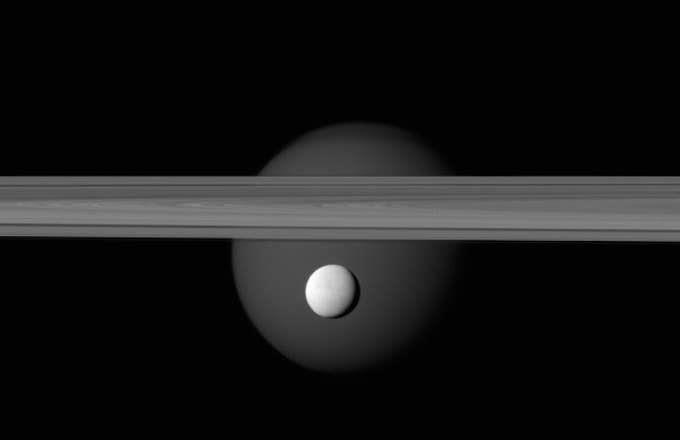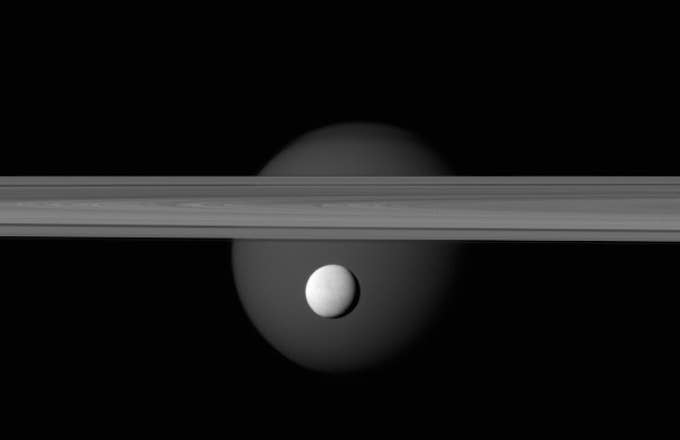
Enceladus, one of Saturn's 53 moons, is a frozen dump on the surface. That's probably because it sits 887 million miles away from the sun. But, according to NASA, beneath that inhospitable crust there could actually be life thriving in the moon's far warmer underground seas.
Scientists made the announcement on Thursday after their Cassini spacecraft discovered evidence that there could be an underground environment with the ability to support microbes due to chemical reactions occurring well below the moon's surface ice. Cassini, which is in its final months of operation, has been exploring both Saturn's moons and its rings for the past 13 years.
The craft found that the moon's levels of carbon dioxide, methane and hydrogen were "out of equilibrium," which could actually lead to an energy source that could provide food for potential inhabitants.
"That’s just going to be a tremendous opportunity to test our theories and see if there’s life there," said NASA director of planetary science James Green. More on that later.
In addition to the NASA discovery, a paper that was published on Thursday coming from another group of researchers noticed a similar situation on one of Jupiter's moons, Europa. Using the Hubble Space Telescope, they noticed a similar plume rising from Europa's crust. Just like Enceladus, there's also an ocean beneath that moon's crappy surface.
Though Enceladus was originally written off as being too small (310 miles wide) to be of interest, Cassini spotted a plume coming up from the moon's south pole. This observation led to the conclusion that there's water below the surface.
Despite the exciting discovery, hydrogen alone isn't proof of life. Because so much hydrogen is making its way into space, it could be a sign that there's very little life (if any) there. "If there is biology there, it isn’t very active," said Mary A. Voytek, who heads up NASA's astrobiology program.
Today's announcement will have to suffice, because Cassini isn't scheduled for any more fly-bys before its designed crash into Saturn in September. Furthermore, NASA has no upcoming plans to return to either Enceladus or Saturn.
In case you're wondering, according to the New York Times, their next major planetary mission will be to the previously mentioned Europa in the 2020s, via the cleverly named Europa Clipper.
Taking all that into consideration, today's new actually seems like kind of a tease from these nerds! Oh well—take what you can get.

